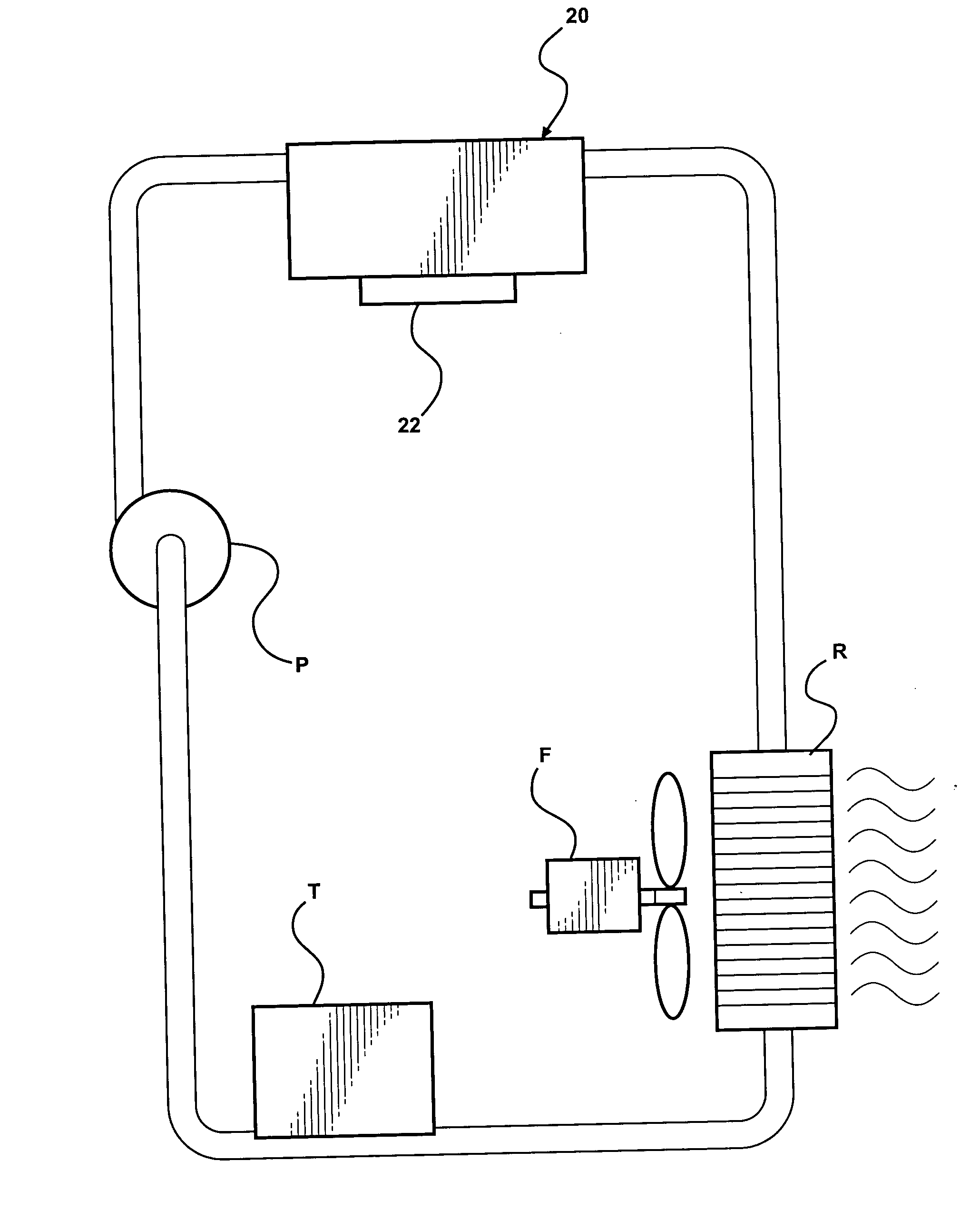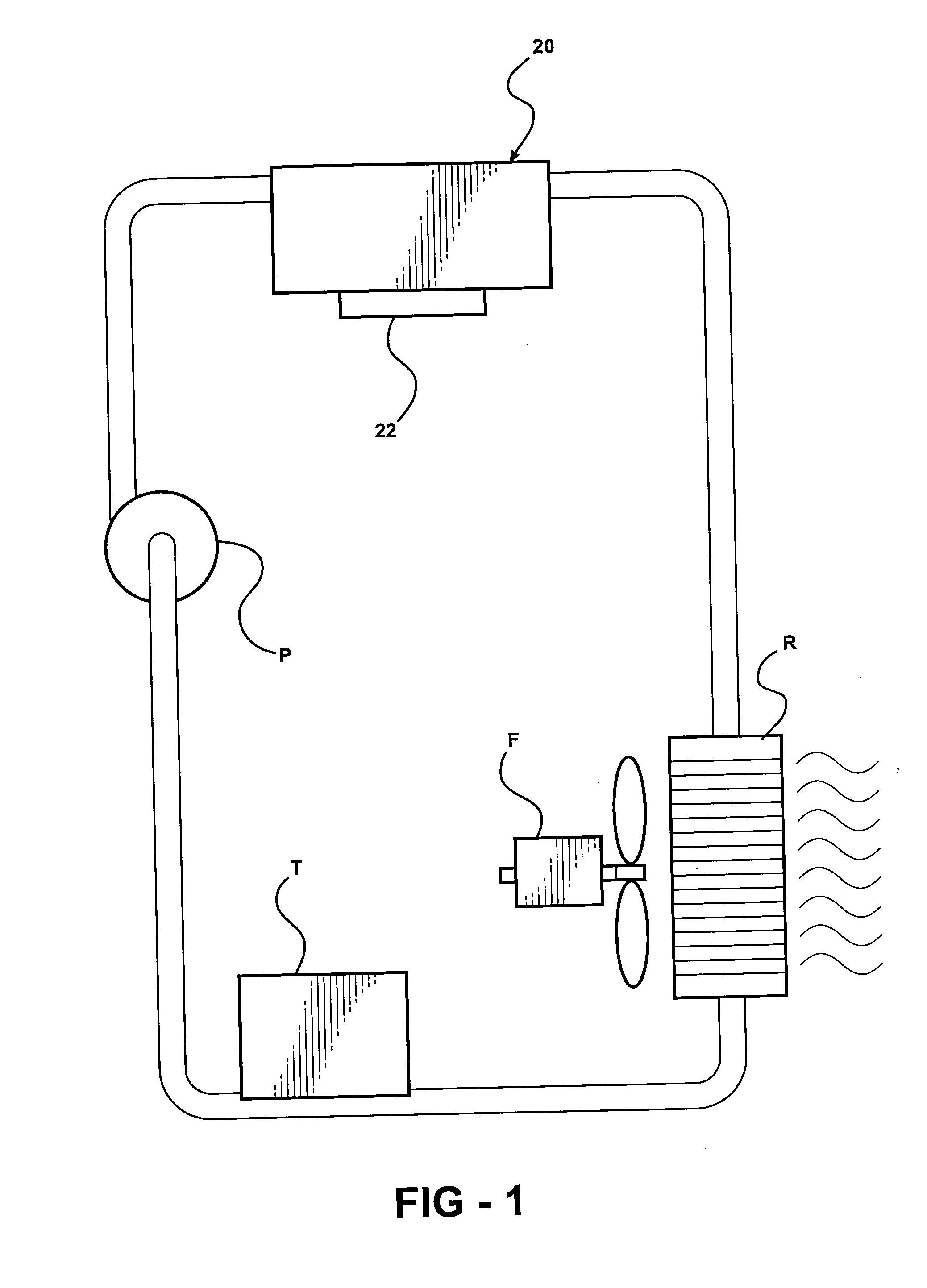Radial flow micro-channel heat sink with impingement cooling
a micro-channel heat sink and radial flow technology, applied in indirect heat exchangers, stoves or ranges, lighting and heating equipment, etc., can solve the problem of relatively low air heat capacity and achieve the effect of enhancing the cooling of electronic components
- Summary
- Abstract
- Description
- Claims
- Application Information
AI Technical Summary
Benefits of technology
Problems solved by technology
Method used
Image
Examples
Embodiment Construction
[0019]FIG. 1 illustrates a system incorporating the heat sink 20 of the subject invention into a liquid cooling system. The liquid cooling system includes working fluid mover, such as a pump P, creates a flow of cooling fluid, usually a liquid, through a cooling fluid storage tank T, which stores excess cooling fluid. The pump P moves the cooling fluid through a heat extractor assembly to dissipate heat from the cooling fluid. The heat extractor includes a fan F and a radiator R. The radiator R can be of the well known type including tubes with cooling fins between the tubes to exchange heat between the cooling fluid passing through the tubes and air forced through the radiator R by the fan F.
[0020] The heat sink 20 assembly removes heat from an electronic device 22.
[0021] The essence of the heat sink 20 assembly is a housing having a base 24 with a top surface, a lid 26 with a bottom surface in spaced relationship with and parallel to the top surface of the base 24. The lid 26 de...
PUM
 Login to View More
Login to View More Abstract
Description
Claims
Application Information
 Login to View More
Login to View More - R&D
- Intellectual Property
- Life Sciences
- Materials
- Tech Scout
- Unparalleled Data Quality
- Higher Quality Content
- 60% Fewer Hallucinations
Browse by: Latest US Patents, China's latest patents, Technical Efficacy Thesaurus, Application Domain, Technology Topic, Popular Technical Reports.
© 2025 PatSnap. All rights reserved.Legal|Privacy policy|Modern Slavery Act Transparency Statement|Sitemap|About US| Contact US: help@patsnap.com



